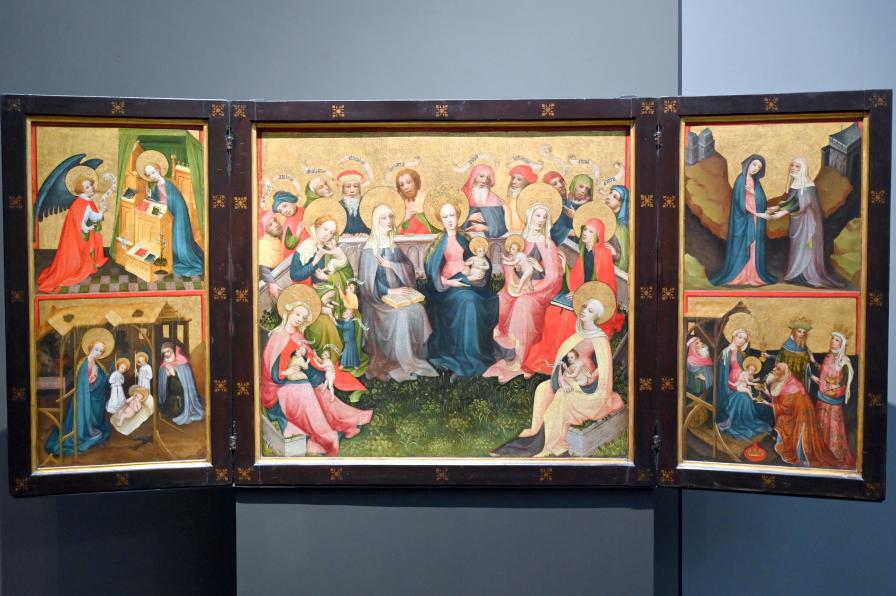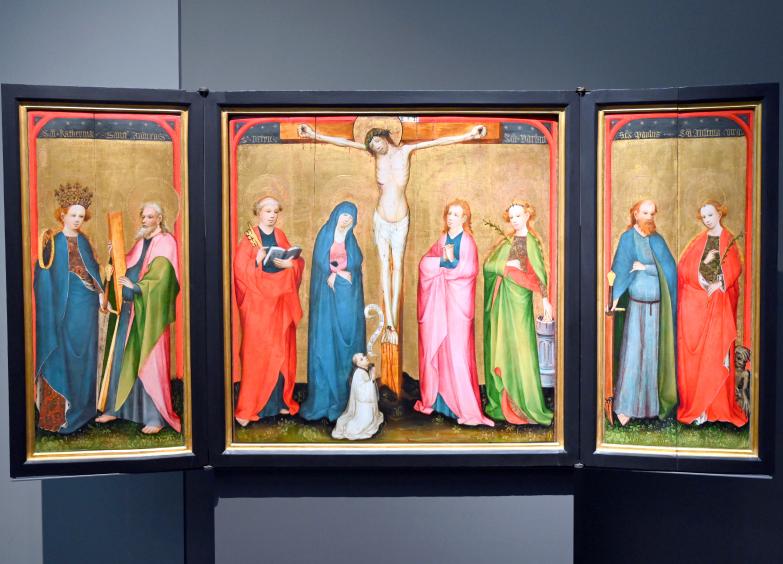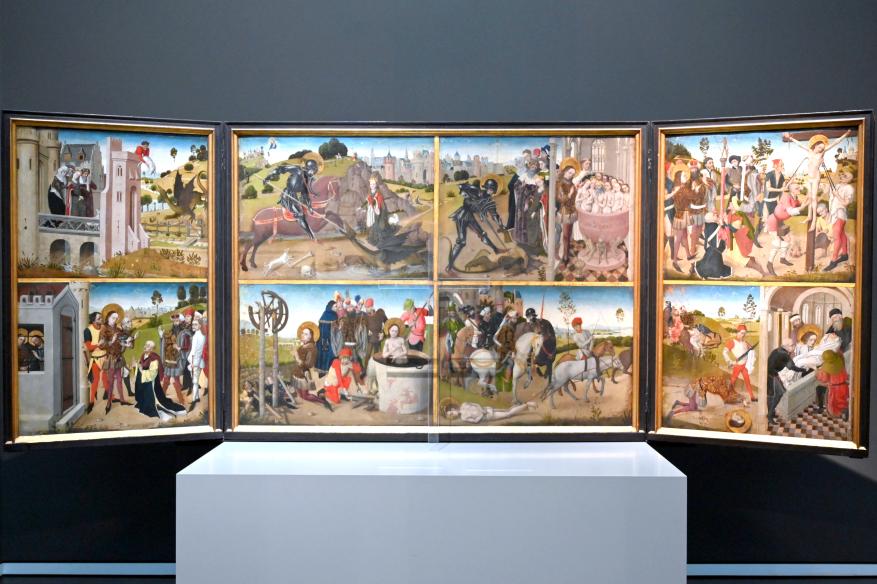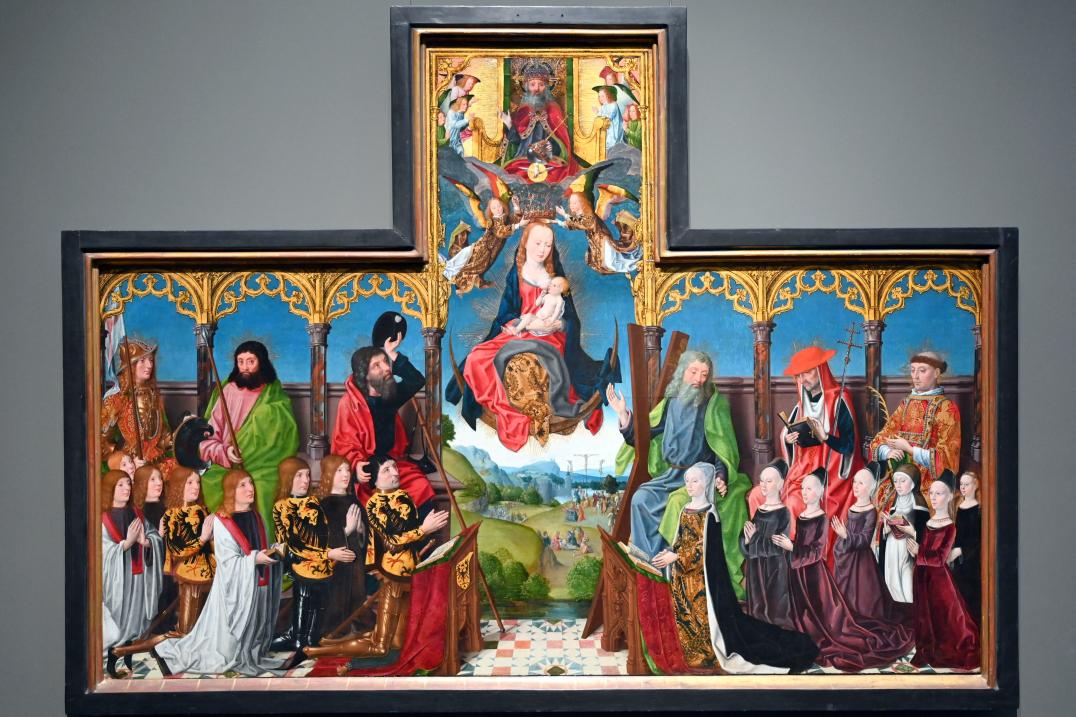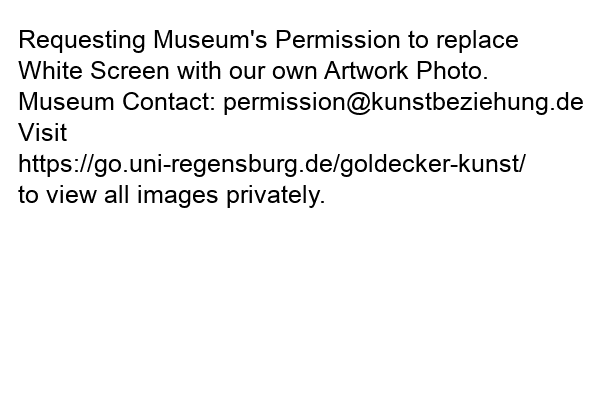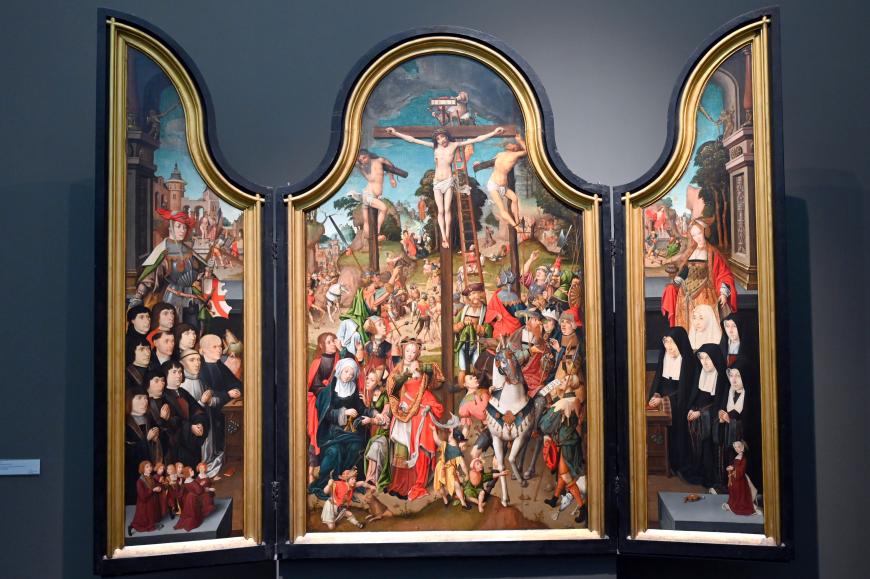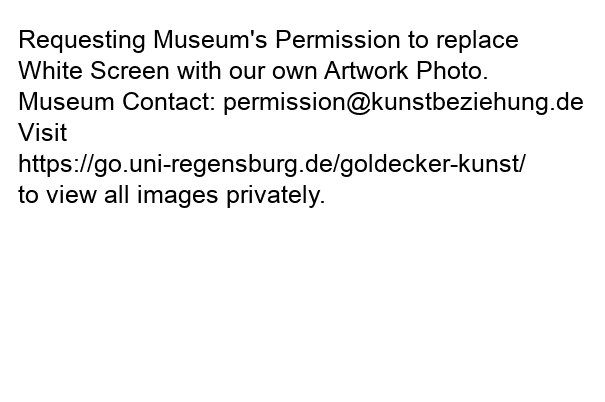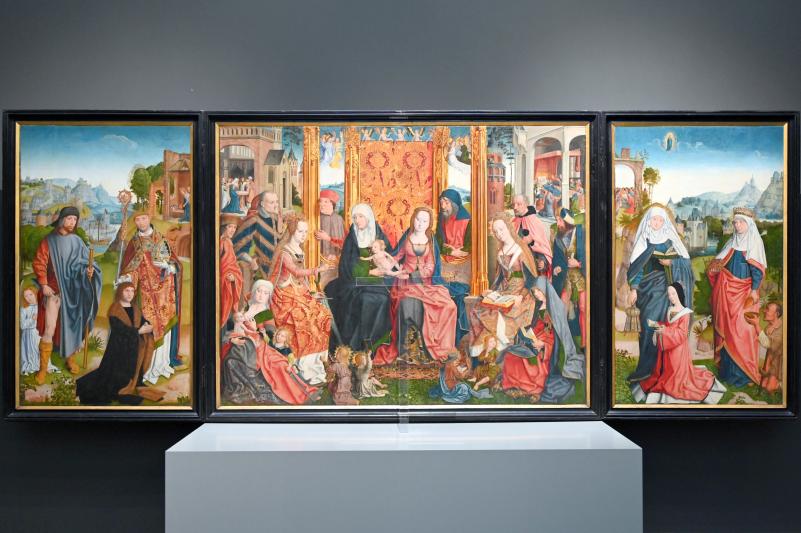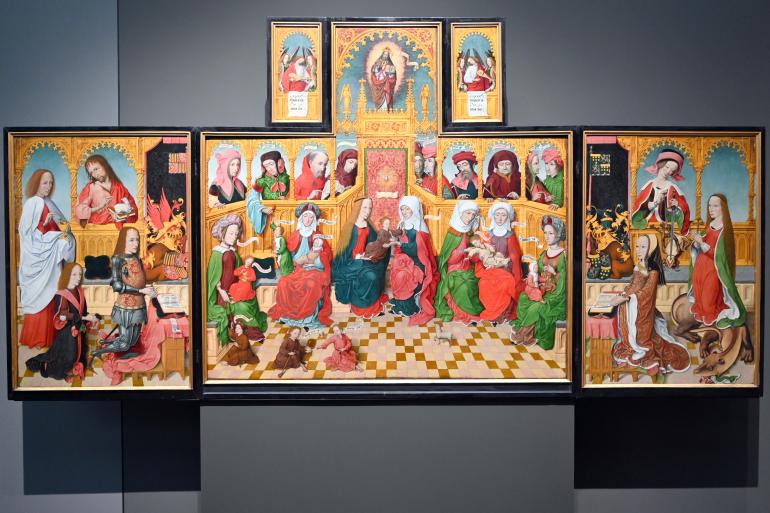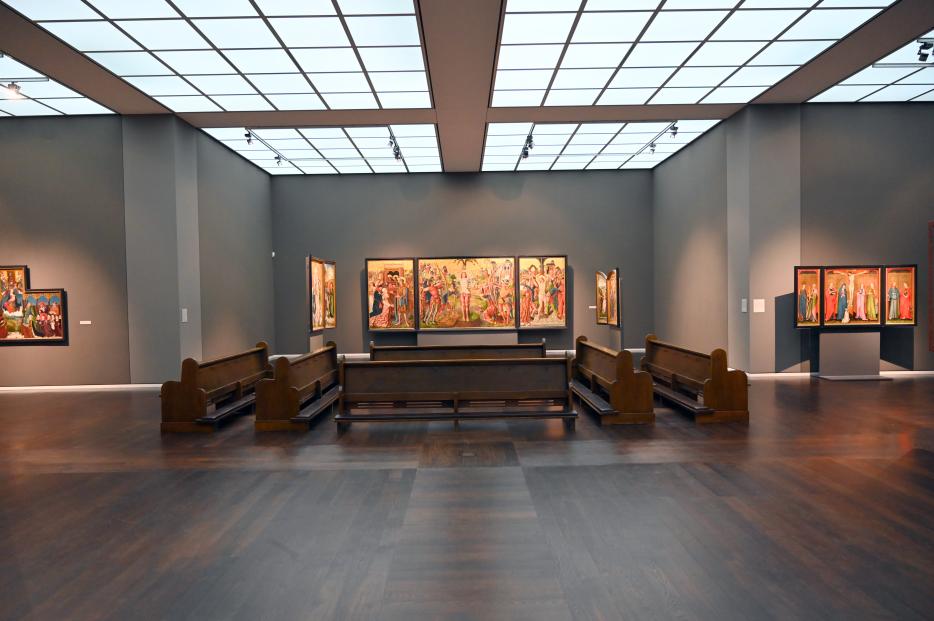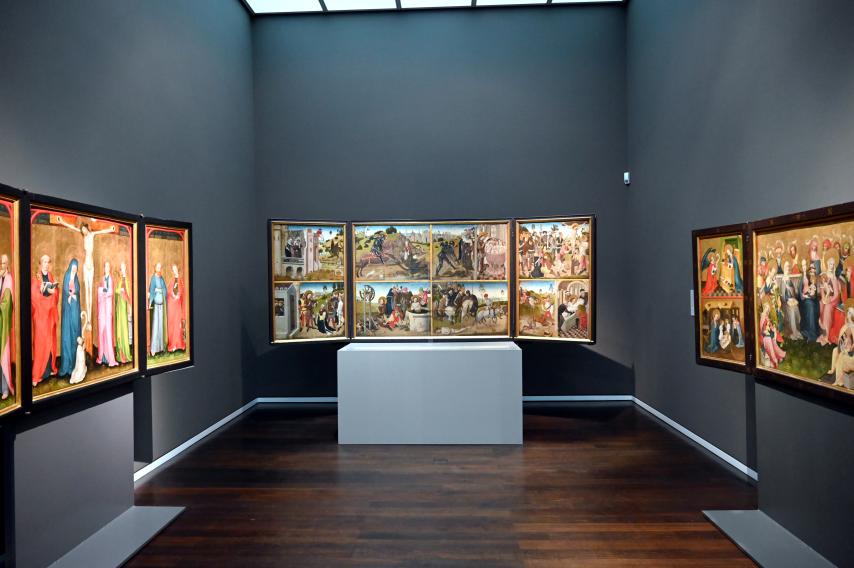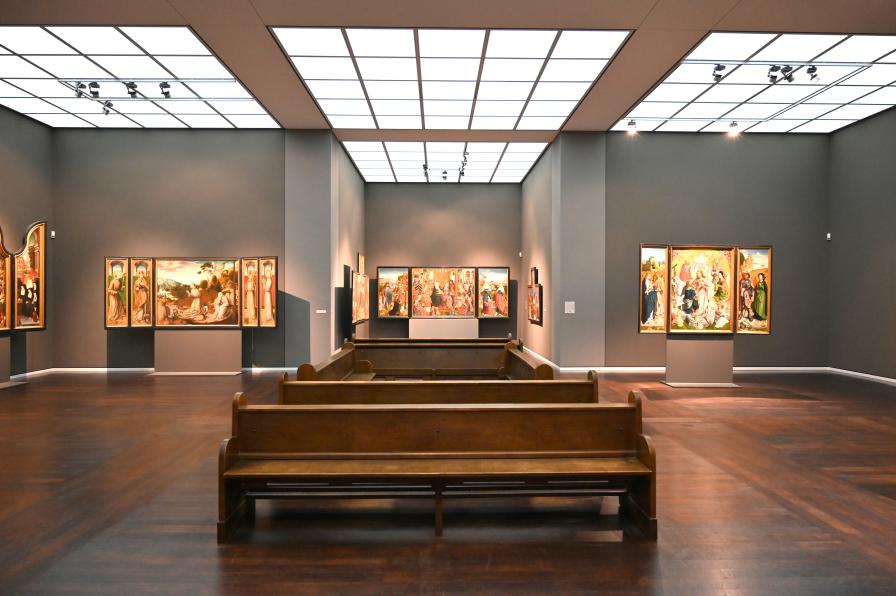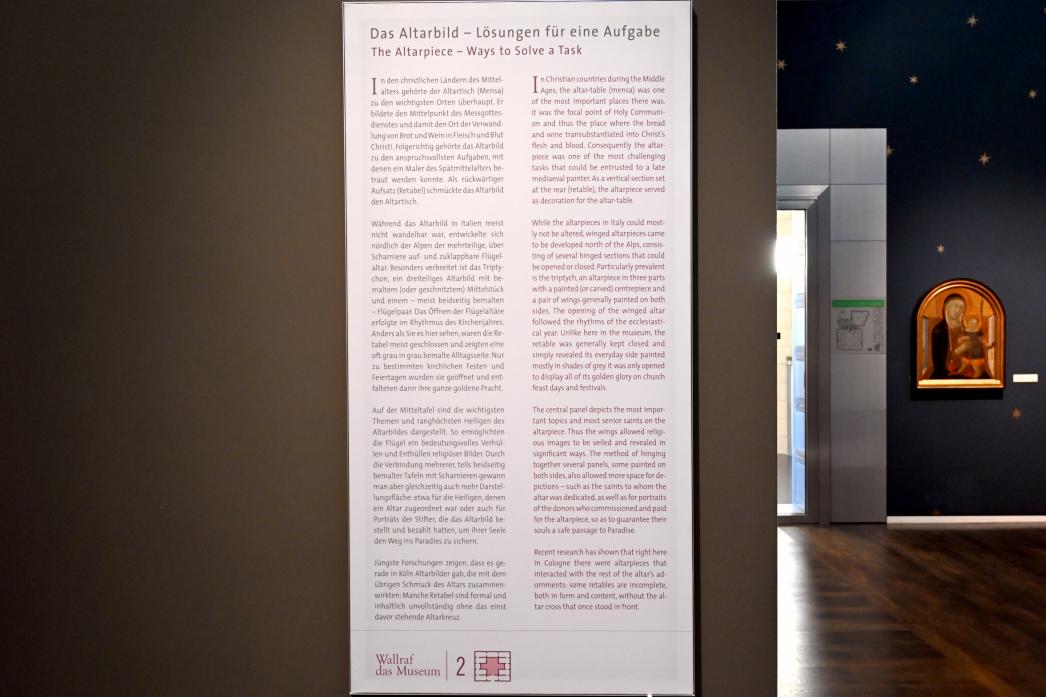Position Köln, Wallraf-Richartz-Museum
Bedeutende Künstler in Köln, Wallraf-Richartz-Museum, Mittelalter - Saal 2 (1420–1503)
Künstler in Köln, Wallraf-Richartz-Museum, Mittelalter - Saal 2
Jüngerer Meister der Heiligen Sippe
tätig um 1475 - 1515/18
Meister der Georgslegende
tätig um 1460 - 1490
Meister des Bartholomäusaltars
tätig um 1470 - 1510
Meister des Kirchsahrer Altars
tätig um 1425 - 1450
Meister von Delft
tätig um 1490 - 1520
Unbekannter Künstler
Köln, Wallraf-Richartz-Museum, Mittelalter - Saal 2 (Inventar-Nr. WRM 350-352)
um 1370–1380
Köln, ehem. Damenstift St. Cäcilien, Stiftskirche
Jetzt: Köln, Wallraf-Richartz-Museum, Mittelalter - Saal 2 (Inventar-Nr. WRM 55)
um 1430
Köln, Wallraf-Richartz-Museum, Mittelalter - Saal 2 (Inventar-Nr. WRM 114-118)
um 1465
Köln, Wallraf-Richartz-Museum, Mittelalter - Saal 2 (Inventar-Nr. WRM 180)
um 1490–1495
Köln, Wallraf-Richartz-Museum, Mittelalter - Saal 2 (Inventar-Nr. WRM 160-164)
um 1493–1494
Köln, Wallraf-Richartz-Museum, Mittelalter - Saal 2 (Inventar-Nr. WRM 193, 194, 531)
um 1500–1505
Unbekannter Künstler
Köln, Wallraf-Richartz-Museum, Mittelalter - Saal 2 (Inventar-Nr. WRM 416)
um 1510
Köln, Wallraf-Richartz-Museum, Mittelalter - Saal 2
Alle Kunstepochen in Köln, Wallraf-Richartz-Museum, Mittelalter - Saal 2
Herkunftsorte

